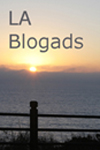U.S. Had Most Extreme Spring on Record for Precipitation
Posted in Main Blog (All Posts) on June 15th, 2011 4:39 am by HL
U.S. Had Most Extreme Spring on Record for Precipitation
Figure 1. Nine states saw their heaviest precipitation in the 117-year record this spring, two saw their second wettest. Texas had its driest spring on record. Meteorologist and Former Hurricane Hunter Jeff Masters has a comprehensive new analysis, “U.S. had most extreme spring on record for precipitation,” which I repost below. Extreme weather disasters, especially […]
Figure 1. Nine states saw their heaviest precipitation in the 117-year record this spring, two saw their second wettest. Texas had its driest spring on record.
Meteorologist and Former Hurricane Hunter Jeff Masters has a comprehensive new analysis, “U.S. had most extreme spring on record for precipitation,” which I repost below.
Extreme weather disasters, especially deluges and floods, are on the rise — and the best analysis says human-caused warming is contributing (see Two seminal Nature papers join growing body of evidence that human emissions fuel extreme weather, flooding). Craig Fugate, who heads the U.S. Federal Emergency Management Agency, said in December, “The term ’100-year event’ really lost its meaning this year” (see Munich Re: “The only plausible explanation for the rise in weather-related catastrophes is climate change”).
I asked Dr. Kevin Trenberth, Distinguished Senior Scientist in the Climate Analysis Section at the National Center for Atmospheric Research, for his comment on this spring:
The US has recently experienced (or is experiencing) some of the worst climate extremes in history: from drought and wild fires to floods, powerful storms and deadly tornadoes. When natural variability is compounded by human influences on climate, this is what we get. Records are not just broken, they are smashed! It’s as clear a warning as we are going to get about prospects for the future.
Of course it won’t happen this way every year, the regions most affected shift (last year Russia, this year Arizona; last year the Indus in Pakistan, this year the Mississippi and Missouri…), and some times will be benign, but the kinds of changes being recorded are just what we expect and have been predicted for the human influence on climate.
Here’s is Masters’ analysis:
U.S. had most extreme spring on record for precipitation
Dr. Jeff Masters
Nature’s fury reached new extremes in the U.S. during the spring of 2011, as a punishing series of billion-dollar disasters brought the greatest flood in recorded history to the Lower Mississippi River, an astonishingly deadly tornado season, the worst drought in Texas history, and the worst fire season in recorded history. There’s never been a spring this extreme for combined wet and dry extremes in the U.S. since record keeping began over a century ago, statistics released last week by the National Climatic Data Center (NCDC) reveal. Their Climate Extremes Index (CEI) looks at the percentage area of the contiguous U.S. experiencing top 10% or bottom 10% monthly maximum and minimum temperatures, monthly drought, and daily precipitation. During the spring period of March, April, and May 2011, 46% of the nation had abnormally (top 10%) wet or dry conditions–the greatest such area during the 102-year period of record. On average, just 21% of the country has exceptionally wet conditions or exceptionally dry conditions during spring. In addition, heavy 1-day precipitation events–the kind that cause the worst flooding–were also at an all-time high in the spring of 2011. However, temperatures during spring 2011 were not as extreme as in several previous springs over the past 102 years, so spring 2011 ranked as the 5th most extreme spring in the past 102 years when factoring in both temperature and precipitation.
Figure 1 [above]. Nine states in the U.S. saw their heaviest precipitation in the 117-year record during spring 2011, with record-breaking precipitation concentrated in the Pacific Northwest and along the Ohio River. Seven other states had top-ten wettest springs. Texas had its driest spring on record, and New Mexico and Louisiana had top-ten driest springs. When compared with Figure 2, we see that this is a classic winter La Niña pattern, but at extreme amplitude. Image credit: NOAA/NCDC.
 Figure 2. La Niña events since 1950 have brought wetter than average conditions to the Pacific Northwest and Ohio River Valley in winter, and drier than average conditions to the South in both winter and spring. Spring 2011 (Figure 1) had a pattern very similar to the classic winter La Niña pattern (left image in Figure 2.) Image credit: NOAA Climate Prediction Center.
Figure 2. La Niña events since 1950 have brought wetter than average conditions to the Pacific Northwest and Ohio River Valley in winter, and drier than average conditions to the South in both winter and spring. Spring 2011 (Figure 1) had a pattern very similar to the classic winter La Niña pattern (left image in Figure 2.) Image credit: NOAA Climate Prediction Center.
 Figure 3. The percent area of the Contiguous U.S. experiencing much above average heavy 1-day precipitation events in spring 2011 hit a record high, nearly 16%. The 102-year average is 9%. The previous record of 15.5% was set in 1964. Heavy springtime 1-day precipitation events in the U.S. have been increasing since 1960, in line with measured increases in water vapor over the U.S. due to a warming climate. See also Figure 4 below. Image credit: NOAA/NCDC.
Figure 3. The percent area of the Contiguous U.S. experiencing much above average heavy 1-day precipitation events in spring 2011 hit a record high, nearly 16%. The 102-year average is 9%. The previous record of 15.5% was set in 1964. Heavy springtime 1-day precipitation events in the U.S. have been increasing since 1960, in line with measured increases in water vapor over the U.S. due to a warming climate. See also Figure 4 below. Image credit: NOAA/NCDC.
 Figure 4. Percent increase in the amount falling in heavy precipitation events (defined as the heaviest 1% of all daily events) from 1958 to 2007, for each region of the U.S. There are clear trends toward more very heavy precipitation events for the nation as a whole, and particularly in the Northeast and Midwest. Climate models predict that precipitation will increasingly fall in very heavy events, similar to the trend that has been observed over the past 50 years in the U.S. Image credit: United States Global Change Research Program. Figure updated from Groisman, P.Ya., R.W. Knight, T.R. Karl, D.R. Easterling, B. Sun, and J.H. Lawrimore, 2004: Contemporary changes of the hydro-logical cycle over the contiguous United States, trends derived from in situ observations. Journal of Hydrometeorology, 5(1), 64-85.
Figure 4. Percent increase in the amount falling in heavy precipitation events (defined as the heaviest 1% of all daily events) from 1958 to 2007, for each region of the U.S. There are clear trends toward more very heavy precipitation events for the nation as a whole, and particularly in the Northeast and Midwest. Climate models predict that precipitation will increasingly fall in very heavy events, similar to the trend that has been observed over the past 50 years in the U.S. Image credit: United States Global Change Research Program. Figure updated from Groisman, P.Ya., R.W. Knight, T.R. Karl, D.R. Easterling, B. Sun, and J.H. Lawrimore, 2004: Contemporary changes of the hydro-logical cycle over the contiguous United States, trends derived from in situ observations. Journal of Hydrometeorology, 5(1), 64-85.
What caused this spring’s extremes?
During a La Niña episode in the Eastern Pacific, when the equatorial waters cool to several degrees below average, abnormally dry winter weather usually occurs in the southern U.S., and abnormally wet weather in the Midwest. This occurs because La Niña alters the path of the jet stream, making the predominant storm track in winter traverse the Midwest and avoid the South. Cold, Canadian air stays north of the jet stream, and warm subtropical air lies to the south of the jet, bringing drought to the southern tier of states. La Niña’s influence on the jet stream and U.S. weather typically fades in springtime, with precipitation patterns returning closer to normal. However, in 2011, the La Niña influence on U.S. weather stayed strong throughout spring. The jet stream remained farther south than usual over the Pacific Northwest and Midwest, and blew more strongly, with wind speeds more typical of winter than spring. The positioning of the jet stream brought a much colder than average spring to the Pacific Northwest, with Washington and Oregon recording top-five coldest springs. Spring was not as cold in the Midwest, because a series of strong storms moved along the jet stream and pulled up warm, moist Gulf of Mexico air, which mixed with the cold air spilling south from Canada. The air flowing north from the Gulf of Mexico was much warmer than usual, because weaker winds than average blew over the Gulf of Mexico during February and March. This reduced the amount of mixing of cold ocean waters from the depths, and allowed the surface waters to heat up. Sea surface temperatures (SSTs) in the Gulf of Mexico warmed to 1°C (1.8°F) above average during April–the third warmest temperatures in over a century of record keeping (SST anomalies were a bit cooler in May, about 0.4°C above average, due to stronger winds over the Gulf.) These unusually warm surface waters allowed much more moisture than usual to evaporate into the air, resulting in unprecedented rains over the Midwest when the warm, moist air swirled into the unusually cold air spilling southwards from Canada. With the jet stream at exceptional winter-like strengths, the stage was also set for massive tornado outbreaks.
 Figure 5. A La Niña-like positioning of the jet stream, more typical of winter than spring, brought much colder air than normal to the Pacific Northwest and Upper Midwest during the spring of 2011. Washington and Oregon had top-five coldest springs, and near-record snowfalls and snow packs were recorded in portions of the Northern Rockies and Northern Plains. South of the mean position of the jet stream, top-ten warmest springs were recorded in Texas, New Mexico, and Louisiana. Image credit: NOAA/NCDC.
Figure 5. A La Niña-like positioning of the jet stream, more typical of winter than spring, brought much colder air than normal to the Pacific Northwest and Upper Midwest during the spring of 2011. Washington and Oregon had top-five coldest springs, and near-record snowfalls and snow packs were recorded in portions of the Northern Rockies and Northern Plains. South of the mean position of the jet stream, top-ten warmest springs were recorded in Texas, New Mexico, and Louisiana. Image credit: NOAA/NCDC.
Was climate change involved?
Whenever an unprecedented series of extreme weather events hit, it is natural to ask how climate change may be affecting the odds of these events, since our climate is undergoing unprecedented changes. This spring’s unusual precipitation pattern–wet in the Northern U.S., and dry in the South–does fit what we’d expect from a natural but unusually long-lived winter La Niña pattern (Figure 2). However, it also fits the type of precipitation pattern climate models expect to occur over the U.S. by the end of the century due to human-caused warming of the climate (though shifted a few hundred miles to the south, Figure 6.) This drying of the Southern U.S. and increased precipitation in the Northern U.S. is expected to occur because of a fundamental shift in the large scale circulation of the atmosphere. The jet stream will retreat poleward, and rain-bearing storms that travel along the jet will have more moisture to precipitate out, since more water vapor can evaporate into a warmer atmosphere. The desert regions will expand towards the poles, and the Southern U.S. will experience a climate more like the desert regions of Mexico have now, with sinking air that discourages precipitation. A hotter climate will dry out the soil more, making record intensity droughts like this year’s in Texas more probable. So, is it possible that the record extremes of drought and wetness this spring in the U.S. were due to a combination of La Niña and climate change. It is difficult to disentangle the two effects without doing detailed modelling studies, which typically take years complete and publish. One weakness in the climate change influence argument is that climate models predict the jet stream should retreat northwards and weaken due to climate change. Indeed, globally the jet stream retreated 270 miles poleward and weakened during the period 1970 – 2001, in line with climate model expectations. Thus, a more southerly position of the jet stream over the U.S. during the spring is something we should expect to see less and less of during coming decades.
 Figure 6. The future: simulated change in precipitation during winter and spring for the years 2089 – 2099 as predicted by fifteen climate models, assuming we continue high emissions of heat-trapping carbon dioxide. Confidence is highest in the hatched areas. Compare with Figure 7, the observed change in precipitation over the past 50 years. Image credit: United States Global Change Research Program.
Figure 6. The future: simulated change in precipitation during winter and spring for the years 2089 – 2099 as predicted by fifteen climate models, assuming we continue high emissions of heat-trapping carbon dioxide. Confidence is highest in the hatched areas. Compare with Figure 7, the observed change in precipitation over the past 50 years. Image credit: United States Global Change Research Program.
 Figure 7. U.S. annual average precipitation has increased by about 5% over the past 50 years, but there has been pronounced drying over the Southeast and Southwest U.S. Even in these dryer regions, though, heavy precipitation events have increased (see Figure 4.) Thus, rainfall tends to fall in a few very heavy events, and the light and moderate events decrease in number. Image credit: United States Global Change Research Program. Data plotted from http://www.ncdc.noaa.gov/oa/climate/research/ushc n/.
Figure 7. U.S. annual average precipitation has increased by about 5% over the past 50 years, but there has been pronounced drying over the Southeast and Southwest U.S. Even in these dryer regions, though, heavy precipitation events have increased (see Figure 4.) Thus, rainfall tends to fall in a few very heavy events, and the light and moderate events decrease in number. Image credit: United States Global Change Research Program. Data plotted from http://www.ncdc.noaa.gov/oa/climate/research/ushc n/.
Keep in mind, though, that climate models are best at describing the future global average conditions, and not at predicting how climate change might affect individual continents–or at predicting how rare extreme events might change. Major continent-scale changes in atmospheric circulation are likely to result over the coming few decades due to climate change, and I expect the jet stream will shift farther to the south in certain preferred regions during some combination of seasons and of the natural atmospheric patterns like La Niña, El Niño, and the Arctic Oscillation. For example, there has been research published linking recent record Arctic sea ice loss to atmospheric circulation changes in the Arctic Oscillation that encourage a southwards dip of the jet stream over Eastern North America and Western Europe during late fall and winter. Until we have many more years of data and more research results, we won’t be able to say if climate change is likely to bring more springs with a circulation pattern like this year’s.
One thing we can say is that since global ocean temperatures have warmed about 0.6°C (1°F) over the past 40 years, there is more moisture in the air to generate record flooding rains. The near-record warm Gulf of Mexico SSTs this April that led to record Ohio Valley rainfalls and the 100-year $5 billion+ flood on the Mississippi River would have been much harder to realize without global warming.
– Jeff Masters
Related Post:
- Trenberth in an interview with Climate Progress last year:
“I find it systematically tends to get underplayed and it often gets underplayed by my fellow scientists. Because one of the opening statements, which I’m sure you’ve probably heard is “Well you can’t attribute a single event to climate change.” But there is a systematic influence on all of these weather events now-a-days because of the fact that there is this extra water vapor lurking around in the atmosphere than there used to be say 30 years ago. It’s about a 4% extra amount, it invigorates the storms, it provides plenty of moisture for these storms and it’s unfortunate that the public is not associating these with the fact that this is one manifestation of climate change. And the prospects are that these kinds of things will only get bigger and worse in the future.”
Poll: Independents ? and Even Republicans ? are Still Concerned About Global Warming and Overwhelmingly Support Clean Energy Development
Yale and George Mason University have released their latest polling analysis, “Public Support for Climate & Energy Policies in May 2011.” Their polling “shows that despite political polarization in Washington D.C., public support for a variety of climate change and energy policies remains high, across party lines“: 71 percent of Americans say global warming should […]
Yale and George Mason University have released their latest polling analysis, “Public Support for Climate & Energy Policies in May 2011.”
Their polling “shows that despite political polarization in Washington D.C., public support for a variety of climate change and energy policies remains high, across party lines“:
- 71 percent of Americans say global warming should be a very high (13%), high (27%), or medium (31%) priority for the president and Congress, including 88 percent of Democrats, 66 percent of Independents, and 50 percent of Republicans.
- 91 percent of Americans say developing sources of clean energy should be a very high (32%), high (35%), or medium (24%) priority for the president and Congress, including 97 percent of Democrats, 89 percent of Independents, and 85 percent of Republicans.
This isn’t surprising to anybody who follows the actual polls — rather than the media’s and pundits’ and politicians’ misinterpretation of what they think the polling says. Also, people still confuse polling on global warming and climate science with polling on whether/how the government should go about addressing global warming.
Americans want action — see links to a dozen polls at the end — no matter what they appear to say about climate science, which critically depends on how the question is phrased (see “Opinion polls underestimate Americans’ concern about the environment and global warming“).
Here are more findings from Yale and GMU:
- Majorities of Americans want more action to address global warming from corporations (65%), citizens themselves (63%), the U.S. Congress (57%), President Obama (54%), as well as their own state and local officials.
- Despite ongoing concerns about the economy, 67 percent of Americans say the U.S. should undertake a large (29%) or medium-scale effort (38%) to reduce global warming, even if it has large or moderate economic costs.
- 82 percent of Americans (including 94% of Democrats, 74% of Independents, and 76% of Republicans) say that protecting the environment either improves economic growth and provides new jobs (56%), or has no effect (26%). Only 18 percent say environmental protection reduces economic growth and costs jobs.
- Large majorities (including Democrats, Independents, and Republicans) say it is important for their own community to take steps to protect the following from global warming: public health (81%), the water supply (80%), agriculture (79%), wildlife (77%), and forests (76%).
The broad public wants action on climate change and clean energy. But right now, a vocal minority has a stranglehold on one political party that can block action given the anti-democratic, super-majority “requirement” of 60 votes to pass legislation in the Senate. And in 2009 and 2010 the majority has, tragically and ultimately self-destructively, become a mostly silent majority. That is the way the world ends, not with a bang but a whimper….
Related Polls:
- Mark Mellman must read on climate messaging: “A strong public consensus has emerged on the reality and severity of global warming, as well as on the need for federal action” (5/09)
- Zogby: 71% of likely voters support House climate bill (8/09)
- Swing state poll finds 60% “would be more likely to vote for their senator if he or she supported the bill” and Independents support the bill 2-to-1 (9/09)
- New CNN poll finds “nearly six in 10 independents” support cap-and-trade (10/09)
- Voters in Ohio, Michigan and Missouri overwhelmingly support action on clean energy and global warming (11/09)
- Overwhelming US Public Support for Global Warming Action (12/09)
- Public Opinion Stunner: WashPost-ABC Poll Finds Strong Support for Global Warming Reductions Despite Relentless Big Oil and Anti-Science Attacks (12/09)
- It’s all about Independents — and Independence (1/10)
- Yale: When asked whether they “support or oppose regulation carbon dioxide as pollutant,” 73 percent said yes, with only 27 percent opposed, including 61 percent of Republicans (2/10)
- Post BP Disaster: Support grows for comprehensive energy bill that makes carbon polluters pay
- Obama’s campaign pollster: “In the aftermath of the oil spill disaster, voters overwhelmingly support a comprehensive clean energy bill”. Voters understand the dangers of our dependence on oil. Now, they’re ready to hold Congress accountable.”
- New polls show Latinos and African Americans support bipartisan climate and clean energy jobs bill
?
?
?





















